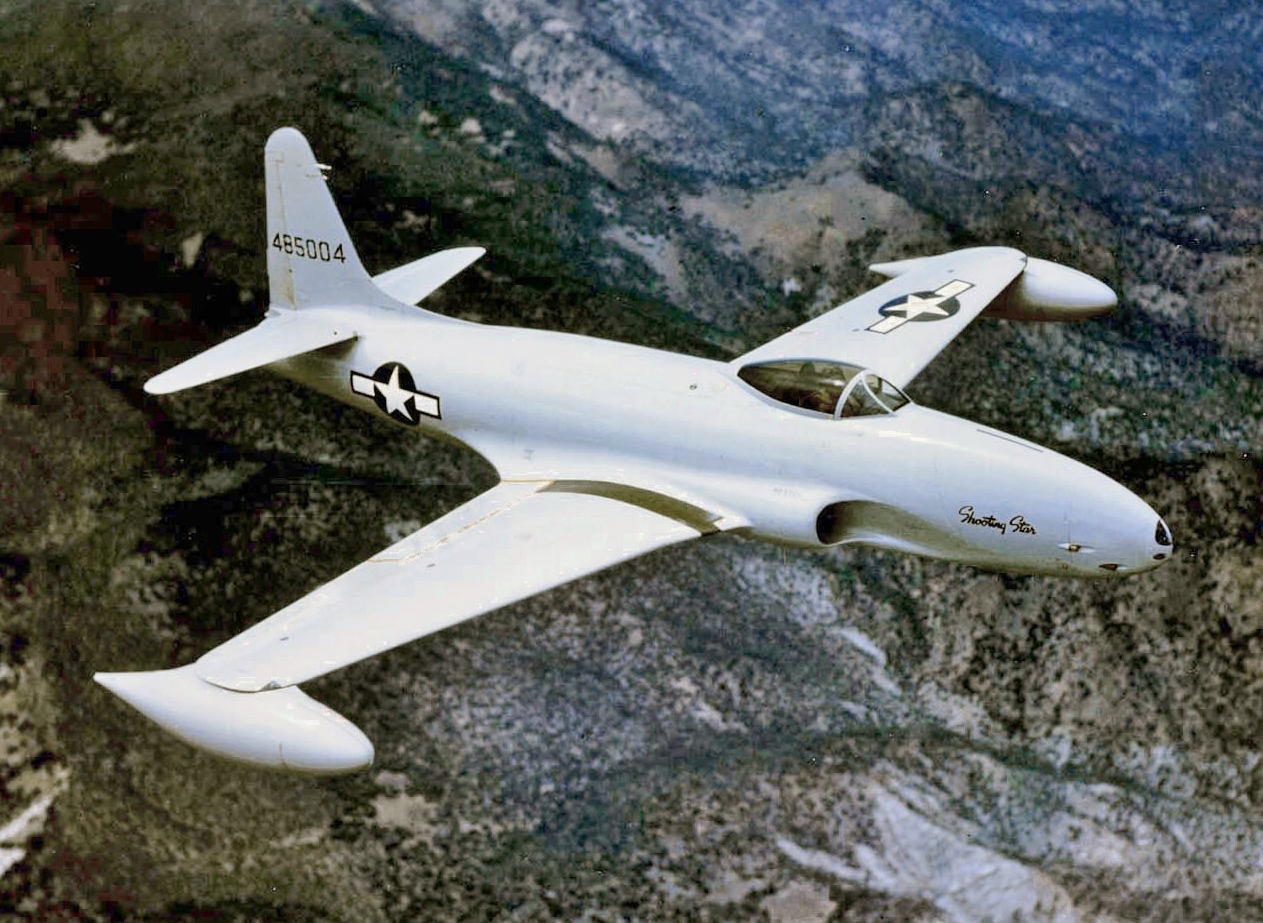
Lockheed’s L-133 Starjet was Almost the World’s First Fighter Jet
The Lockheed L-133 Starjet was a prime example of a paradoxical “successful failure.”
As I asserted in a recent article for The National Interest, of all the great geniuses in the history of military aviation history, none could quite compare to the late great Clarence “Kelly” Johnson (February 27, 1910-December 21, 1990), the mastermind behind Lockheed’s (now Lockheed Martin’s) legendary Skunk Works division.
Among Kelly’s early successes was the P-80/F-80 Shooting Star, which, during the Korean War, became the first U.S. jet fighter to be used in combat. According to official U.S. Air Force records, it was also the winner of history’s first jet vs. jet air battle (though the Soviets dispute this, as does the U.S. Navy).
But what is not well-known to all but the most hardcore aviation history buffs is that Johnson and his Lockheed brethren almost attained another historical milestone for the first jet fighter. Heck, I didn’t even know about this until I stumbled upon a Found and Explained segment (reshared by MSN) titled “Lockheed L-133 Starjet – The Nearly Built ‘1st’ Jet Fighter!”
It is now time for The National Interest to give this would-be history-making warbird its proverbial moment in the sun.
What Might Have Been: L-133 Starjet Conceptualization
Johnson and his crew first formulated the idea behind the L-133 in 1939, the year World War II kicked off (and nine years after Air Commodore Sir Frank Whittle patented the world’s first viable jet engine). The ever-innovative Lockheed engineers were very excited about the potential of jet engines, and this potential, along with the rising tensions between the United States on one side and Nazi Germany and Imperial Japan on the other, sparked the U.S. Army Air Corps’ (USAAC, the predecessor of the present-day U.S. Air Force) interest in the concept.
Accordingly, the USAAC brass authorized the construction of a prototype engine. What Johnson and his colleagues came up with was the L-1000 engine, which employed a then-revolutionary axial-flow type engine that could generate 5,500 pound-force (lbf; 24.46 klN) worth of thrust while weighing just over 1,000 lbs. (453.59 kgs).
On-Paper Specifications
Hypothetically, the L-133 would’ve had the following tech specs and vital stats:
- Crew: one
- Fuselage Length: 48 ft 4 in (14.73 m)
- Wingspan: 46 ft 8 in (14.22 m)
- Wing area: 325 sq ft (30.194 m2)
- Max airspeed: 612 mph (985 km/h; 531 kn; Mach 0.797)
- Range: 310 miles (500 km)
- Armament: four × 20mm nose-mounted cannon
The final on-paper design placed the air intakes at the nose of the plane and a blended-wing body with the wings at the rear of the fuselage; the D-shaped air ducts would travel from the front of the airframe around the cockpit to the twin engines at the rear. Meanwhile, the guns would be mounted inside the nose.
So, What Went Wrong?
According to the narrator of the video, it boiled down to the government wanting to concentrate on propeller-driven planes. Jet engines were still an unproven and untested technology, and moreover:
“[T]hey already had fleets of propeller aircraft doing the right job … Due to wartime production, precision parts were hard to come by, and the research stalled to a crawl. They simply didn’t have the materials, expertise, nor the capability to make this at the time. They were a decade too early. Additionally, fighter pilots at the time, as well as the crew, maintenance, and the entire US war machine were trained on propeller aircraft. To introduce a new type of plane during the war would have been very difficult and again, sucked away essential war resources.”
Thus it came to pass that Nazi Germany’s Messerschmitt Me 262 Schwalbe (“Swallow”) became history’s first operational jet fighter instead, while the first American jet fighter to get off the ground was the Bell P-59 Airacomet (though it never saw combat). As for the jet engine’s birth country, Great Britain, its first jet fighter was the Gloster Meteor. C’est la vie.
That said, the concept of the L-133 wasn’t a totally failed legacy, as the aforementioned P-80 ended up drawing heavily upon the Starjet design. So, with hindsight, we could say that the Lockheed L-133 Starjet was a prime example of a paradoxical “successful failure.”
About the Author: Christian D. Orr
Christian D. Orr is a Senior Defense Editor for National Security Journal (NSJ). He is a former Air Force Security Forces officer, Federal law enforcement officer, and private military contractor (with assignments worked in Iraq, the United Arab Emirates, Kosovo, Japan, Germany, and the Pentagon). Chris holds a B.A. in International Relations from the University of Southern California (USC) and an M.A. in Intelligence Studies (concentration in Terrorism Studies) from American Military University (AMU). He has also been published in The Daily Torch, The Journal of Intelligence and Cyber Security, and Simple Flying. Last but not least, he is a Companion of the Order of the Naval Order of the United States (NOUS).
Image: USAF, Public Domain.